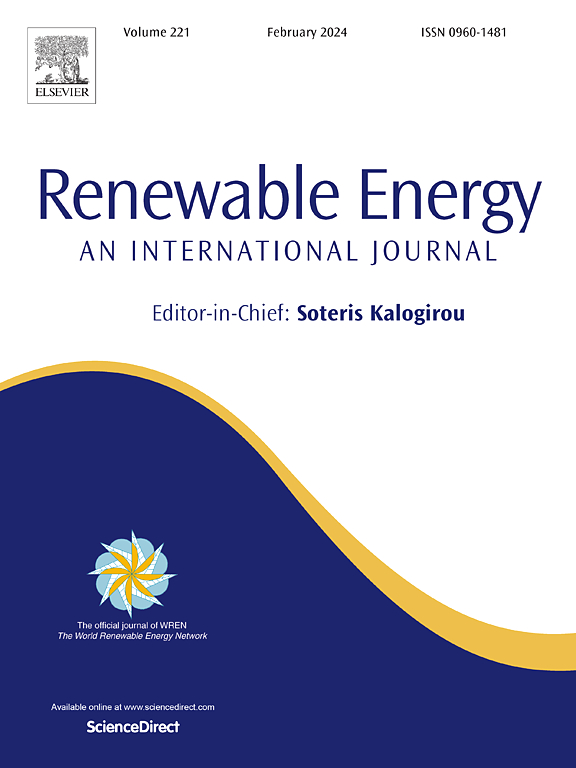Comparative analysis of semi-transparent photovoltaic technologies for agrivoltaic applications
IF 9.1
1区 工程技术
Q1 ENERGY & FUELS
引用次数: 0
Abstract
In this study, we analysed the potential of various semi-transparent photovoltaic (PV) modules for agrivoltaic applications. To this end, we evaluated four modules: CdTe with 50 % and 20 % transparency, respectively, aSi with 20 % transparency, and cSi with 60 % transparency using interspaced cells. The analysis included the current-voltage measurements, environmental factors such as the solar spectrum and temperature, and the spectral transmittance of each module to estimate the energy passing through for agrivoltaic purposes. The performance ratio analysis revealed varying behaviours based on the transparency levels for CdTe and marked seasonality for aSi. Higher transparency modules exhibited slightly lower operating temperatures. The energy output per square meter was highest for the cSi60 module, generating 129.7 kWh/m2/year, followed by CdTe20 (123.3 kWh/m2/year), aSi20 (117.5 kWh/m2/year), and CdTe50 (95.16 kWh/m2/year). The spectral analysis demonstrated that the cSi60 module transmitted the most visible light, making it ideal for agrivoltaics, whereas the aSi20 module transmitted more infrared radiation. The variation in the photosynthesis analysis for the ‘Berner Rose’ tomato indicated that only the CdTe50 and cSi60 modules reached plant saturation, with annual photosynthesis levels of 92 % for cSi60, which is the highest among the modules.
农业光伏应用半透明光伏技术的对比分析
在这项研究中,我们分析了各种半透明光伏(PV)模块在农业光伏应用中的潜力。为此,我们评估了四个模块:CdTe(透明度分别为50%和20%)、aSi(透明度为20%)和cSi(透明度为60%)。分析包括电流电压测量,太阳光谱和温度等环境因素,以及每个模块的光谱透射率,以估计通过农业发电目的的能量。绩效比率分析揭示了基于CdTe透明度水平和aSi显著季节性的不同行为。高透明度模块的工作温度略低。cSi60组件每平方米的能量输出最高,为129.7 kWh/m2/年,其次是CdTe20 (123.3 kWh/m2/年),aSi20 (117.5 kWh/m2/年)和CdTe50 (95.16 kWh/m2/年)。光谱分析表明,cSi60模块传输最多的可见光,使其成为农业光伏的理想选择,而aSi20模块传输更多的红外辐射。“伯纳玫瑰”番茄光合作用分析的差异表明,只有CdTe50和cSi60模块达到植株饱和,cSi60模块的年光合作用水平为92%,是所有模块中最高的。
本文章由计算机程序翻译,如有差异,请以英文原文为准。
求助全文
约1分钟内获得全文
求助全文
来源期刊

Renewable Energy
工程技术-能源与燃料
CiteScore
18.40
自引率
9.20%
发文量
1955
审稿时长
6.6 months
期刊介绍:
Renewable Energy journal is dedicated to advancing knowledge and disseminating insights on various topics and technologies within renewable energy systems and components. Our mission is to support researchers, engineers, economists, manufacturers, NGOs, associations, and societies in staying updated on new developments in their respective fields and applying alternative energy solutions to current practices.
As an international, multidisciplinary journal in renewable energy engineering and research, we strive to be a premier peer-reviewed platform and a trusted source of original research and reviews in the field of renewable energy. Join us in our endeavor to drive innovation and progress in sustainable energy solutions.
 求助内容:
求助内容: 应助结果提醒方式:
应助结果提醒方式:


